Location
Hanoi, Vietnam
Photo
Minh Anh
Movie
NOTES
In Hanoi, sycamore trees line the city’s streets. Brought from Africa by the French in the late 19th century, they have witnessed the city’s passage through colonial rule, war, and modern urbanization. When one of these trees fell, it carried the weight of history. For artist Tia-Thủy Nguyễn, its fall was not an ending but the starting point of a new work.

From Death to Rebirth
For Tia, the fall of a tree marks a beginning rather than an end. Her work Resurrection takes the remains of the tree and gives them new form, shaped by the idea that matter may disappear but energy continues. The work functions as a ritual, turning loss into a process of renewal.
Tia and her team covered the tree’s body with hundreds of stainless steel plates, each five millimeters thick and shaped by hand to follow the original grain of the bark. More than 6,000 hours of work and six tons of metal were used to build its surface, which records both memory and labor.



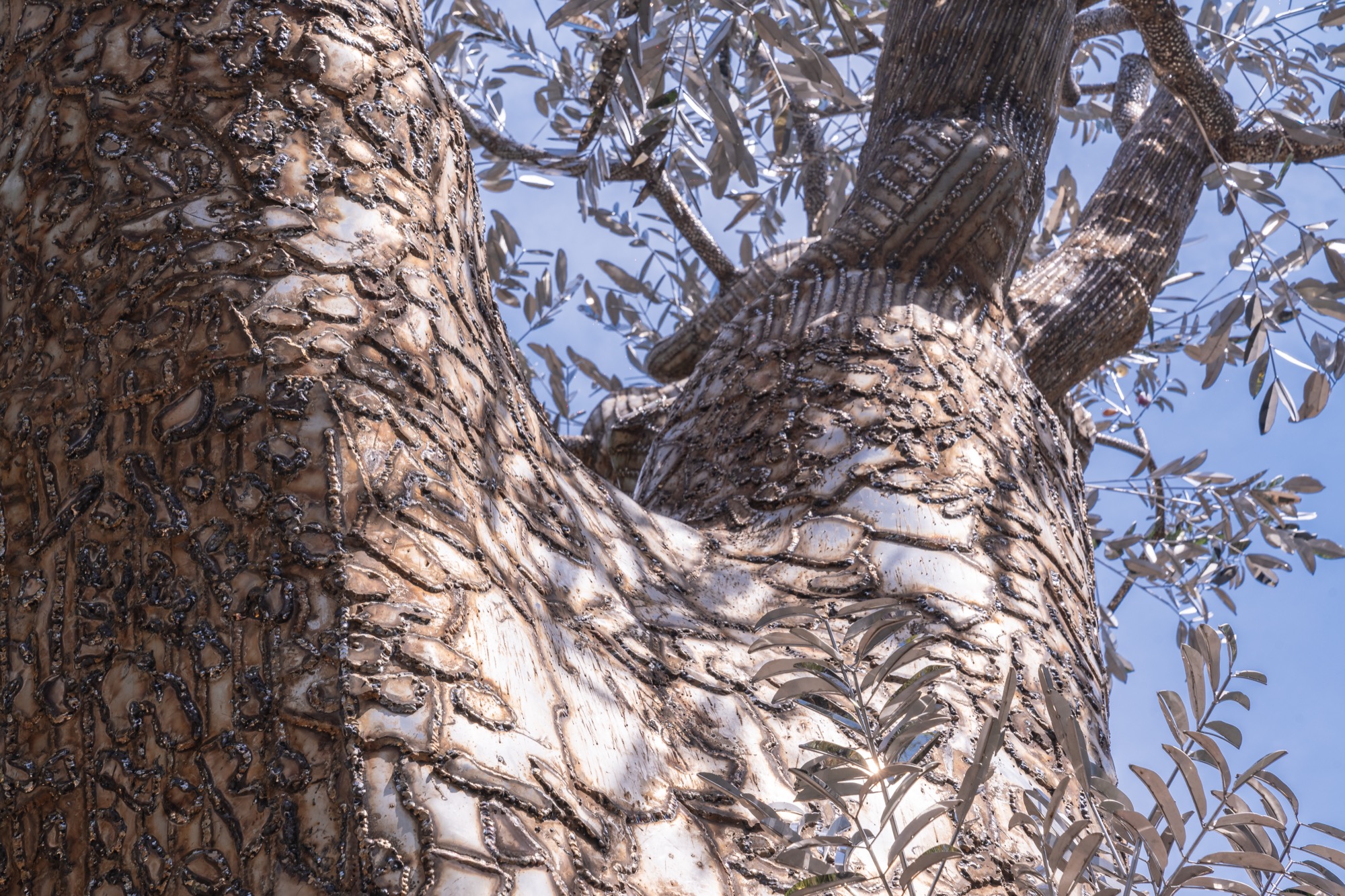
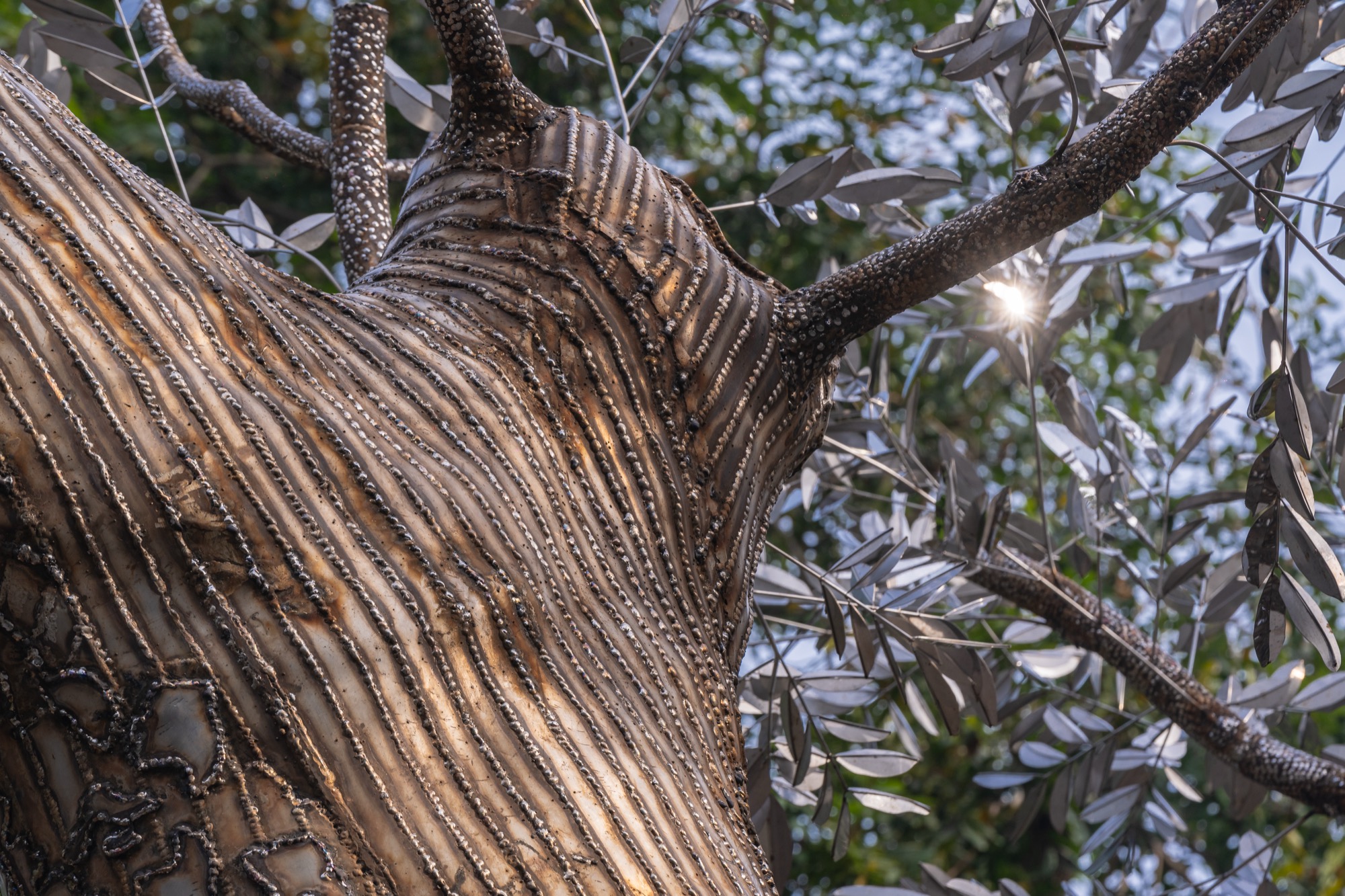
A Dance of Light
The work was placed back at the site where the tree once stood. There, it interacts with daylight. The steel surface changes as the sun moves, and quartz elements shift in response to light and season.
Tia describes this as a “performance” of nature, where metal, light, memory, and the viewer come together in a continuous cycle.

The tree collapsed and was cut into sections after the storm. Photo: Tia Thuy Nguyen
Resurrection transcends its physical form, becoming a portal to memory. A fleeting sunray or breeze can evoke forgotten summers, lost trees, or unspoken words. For Tia, death is not final but a gateway to new existence, with art as its mediator. The work prompts reflection: Can a fallen tree become a collective memory? Can art transform loss into healing?
Placed in Hanoi’s public space, Resurrection redefines our relationship with nature, history, and shared spaces, offering a profound meditation on resilience and renewal.
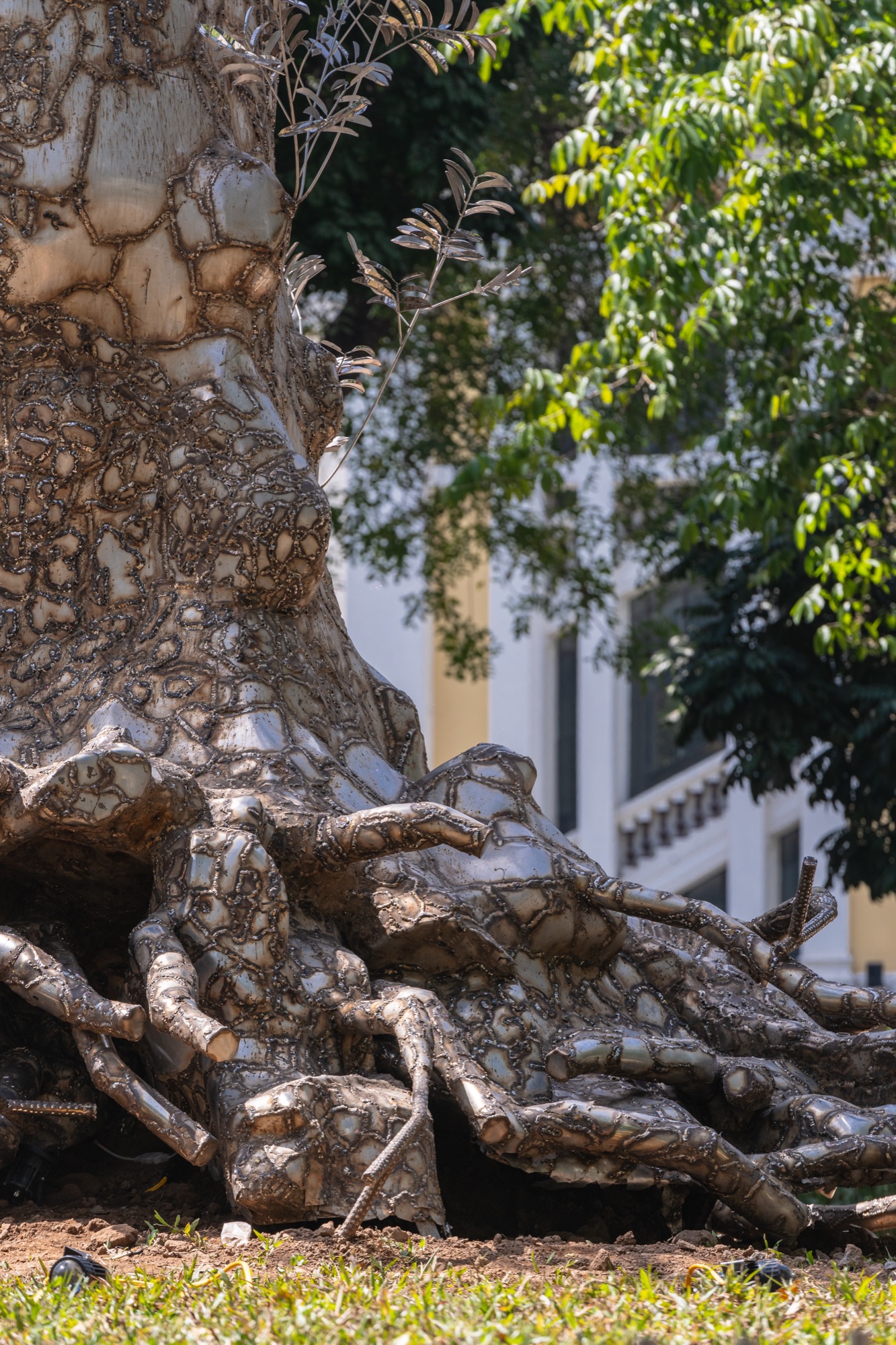
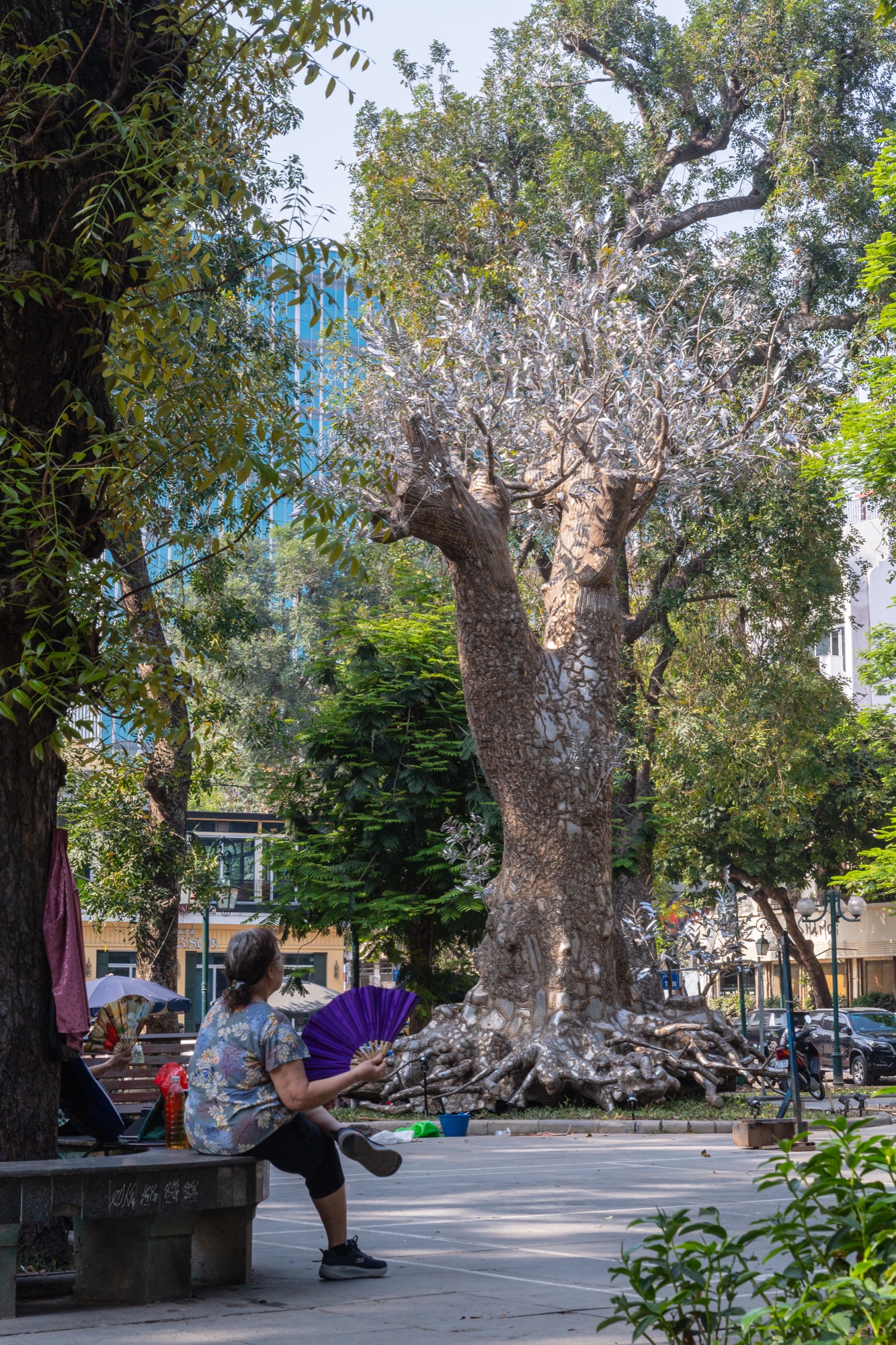
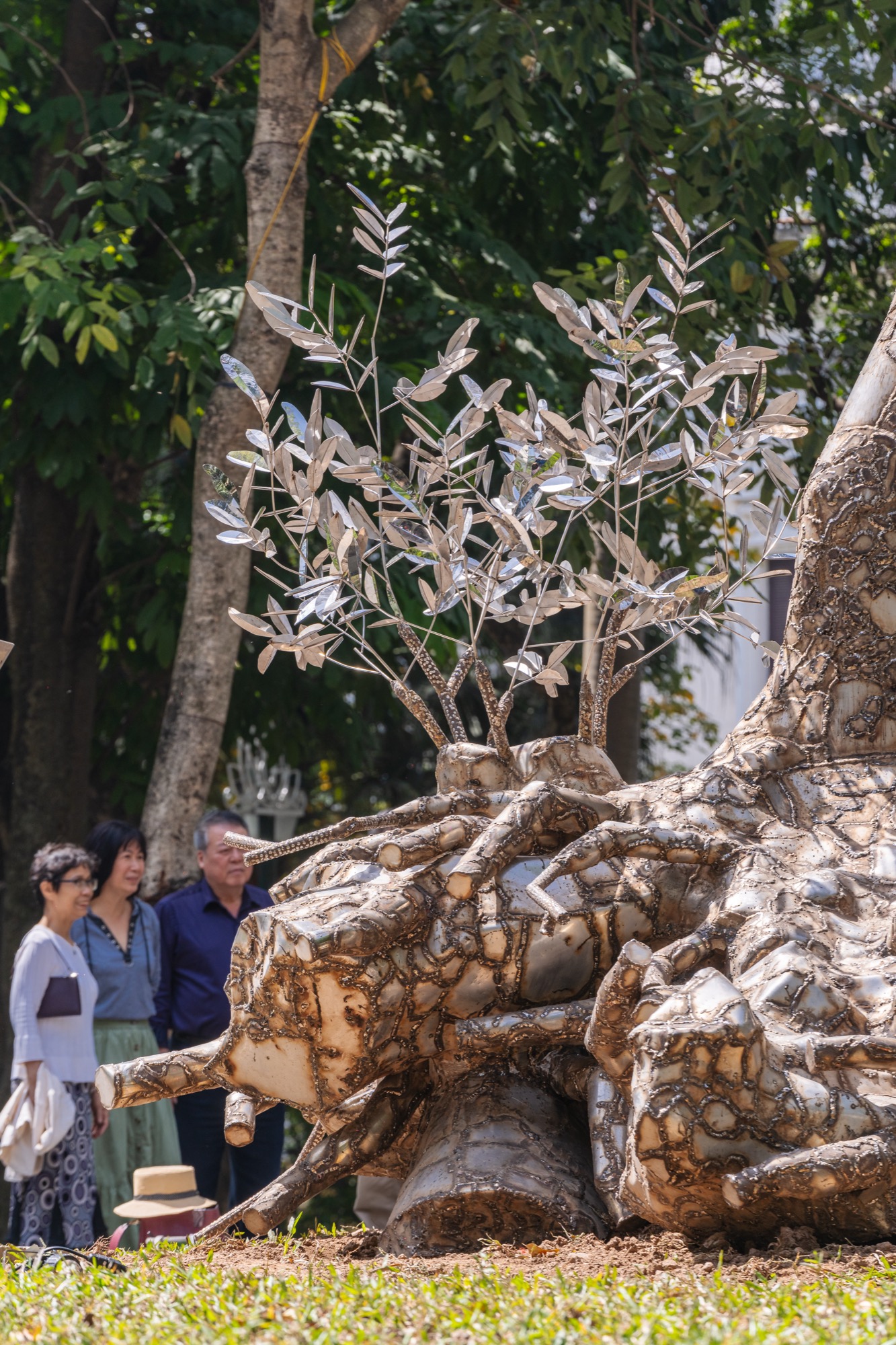
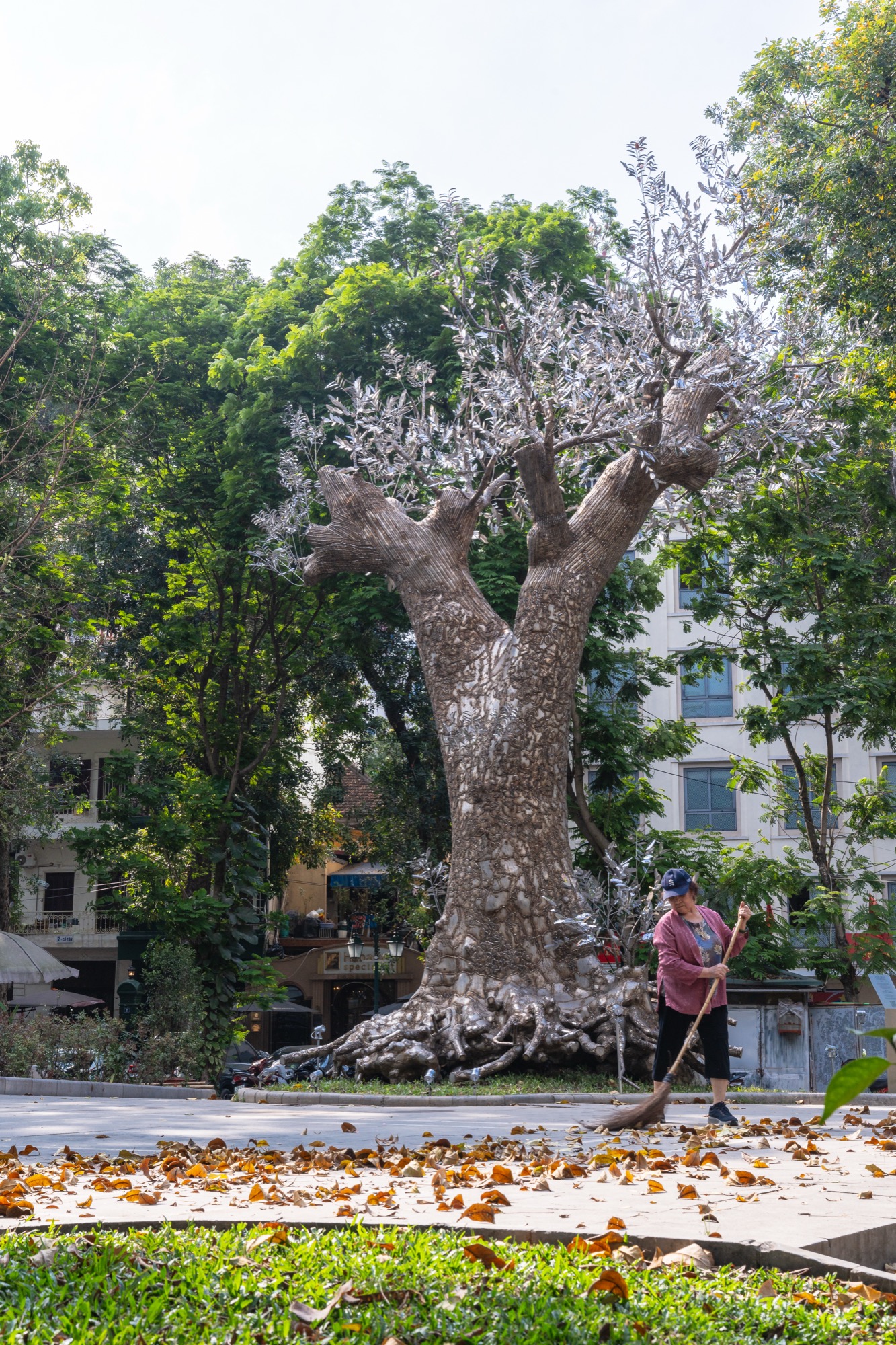
Born in Hanoi in 1981, Tia-Thủy Nguyễn graduated from the Vietnam University of Fine Arts in 2006 and earned a PhD in Fine Arts at the National Academy of Fine Arts and Architecture in Kyiv in 2014. Her practice reflects her observations of daily life and the shifting conditions of modernity.
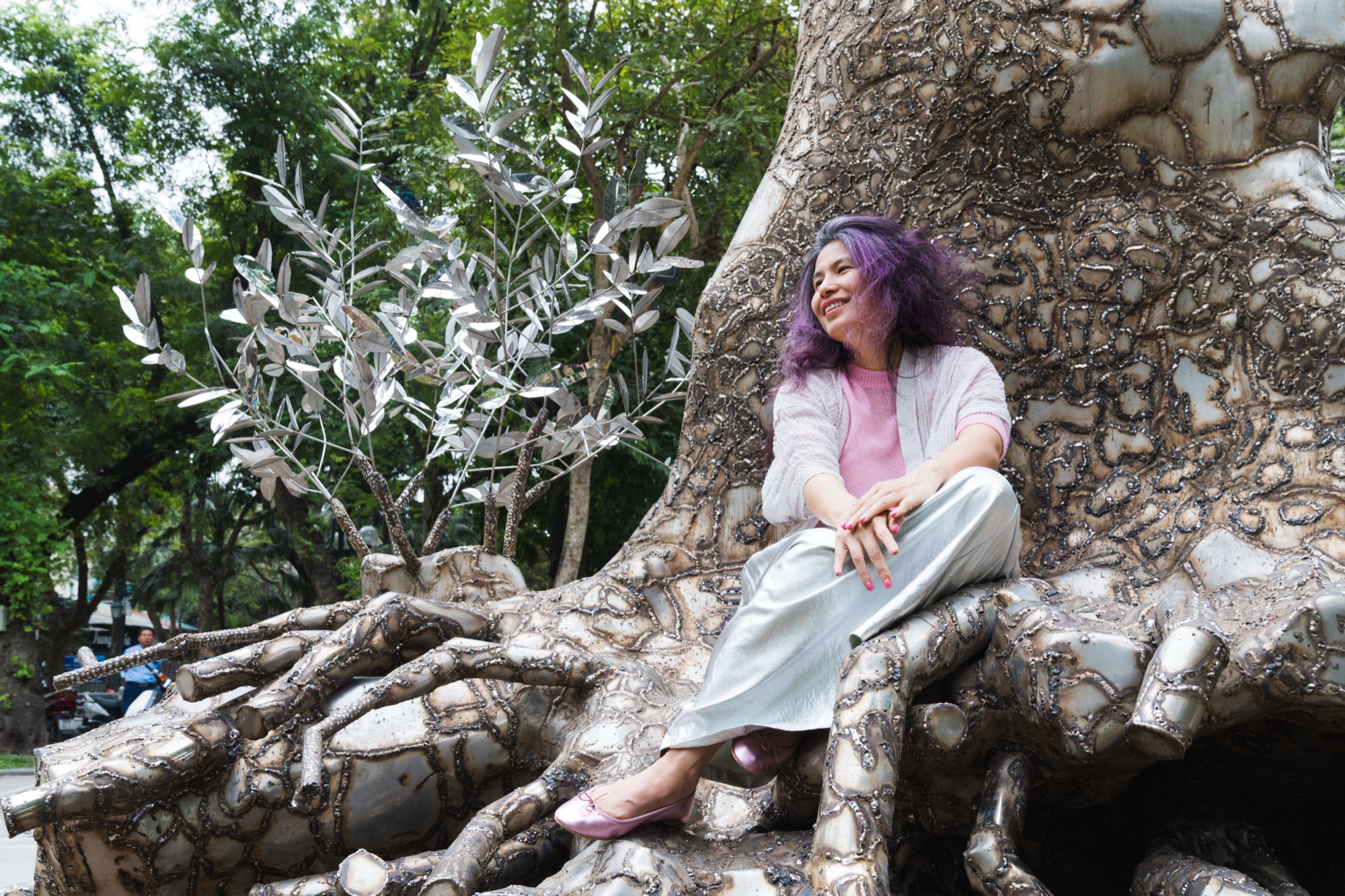
In 2016, she established The Factory Contemporary Arts Centre in Ho Chi Minh City, the first purpose-built space for contemporary art in Vietnam. A year later she founded Pink Studio Films to produce stories that connect communities and often explore women’s roles in society.
Her works have been shown and collected in Vietnam and Europe. In 2019, she became the first Vietnamese artist represented in the collection of Château La Coste in France and was listed by Forbes Vietnam among its “50 Most Influential Women.”
